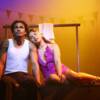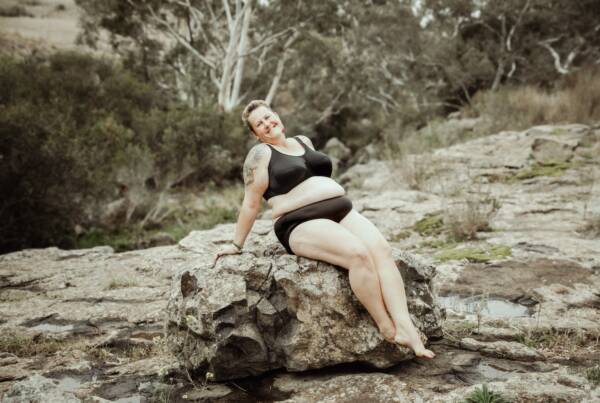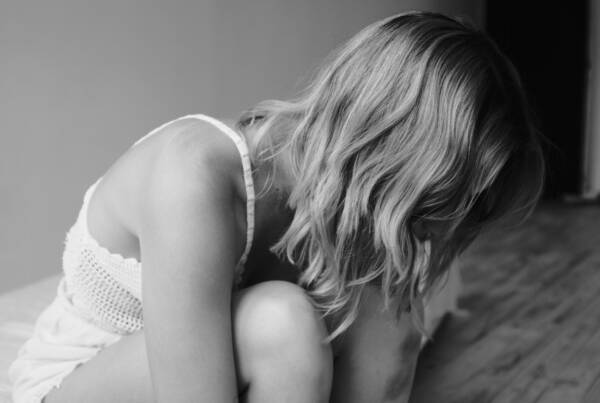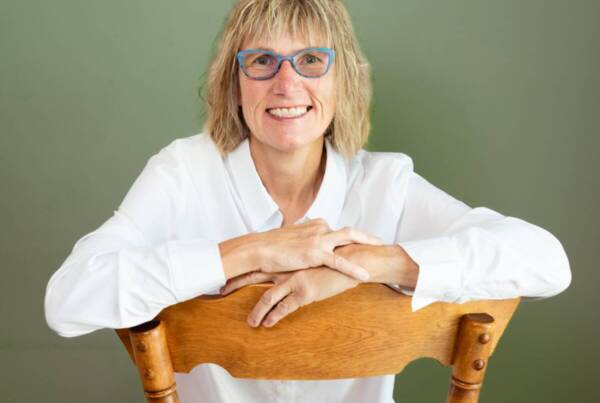Words by Charlie Kondos // Photo by SUNDAY II SUNDAY
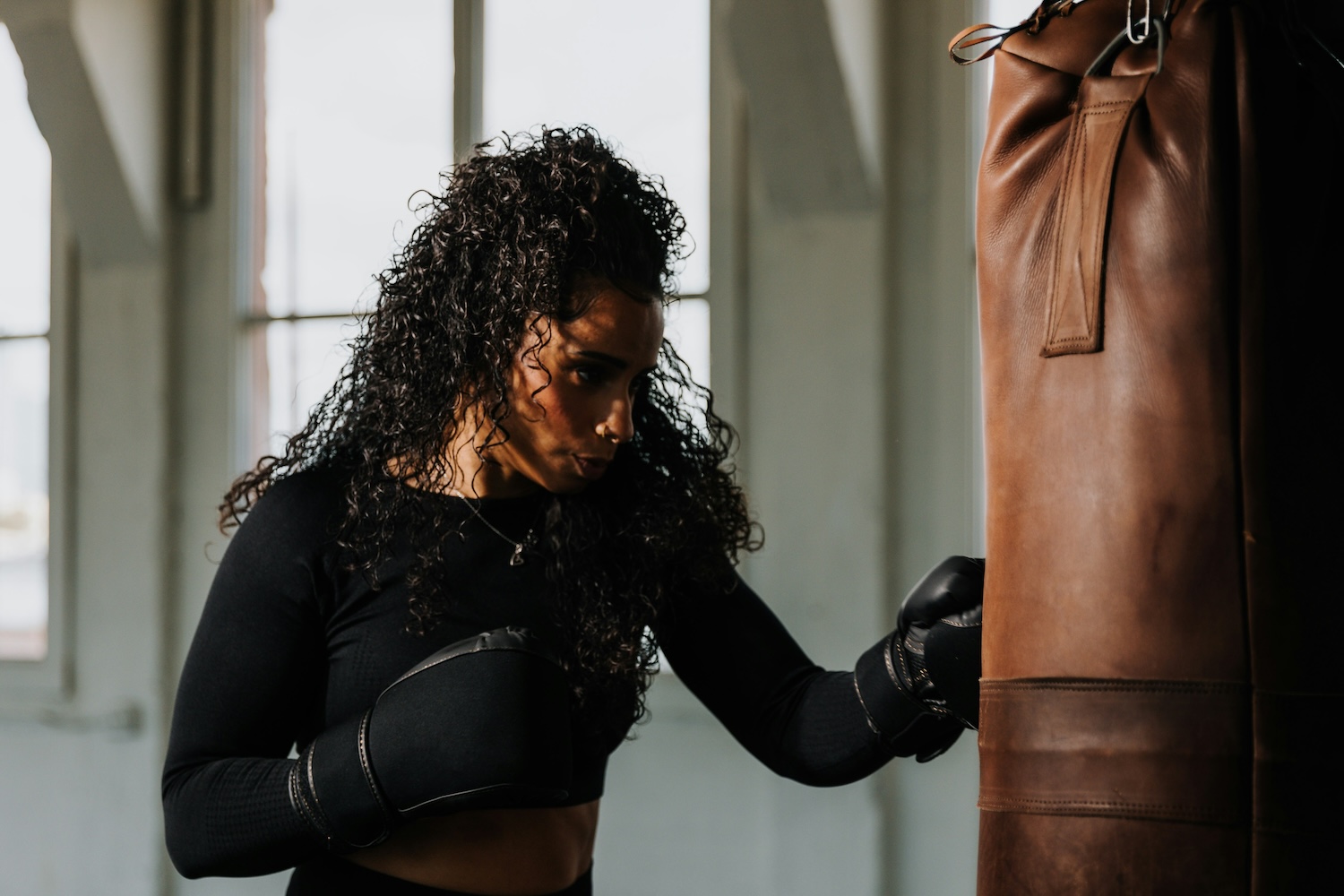 Her eyes sparked with pride as she explained her most recent endeavour: boxing.
Her eyes sparked with pride as she explained her most recent endeavour: boxing.
The kind that involves a bag, some gloves, and a strobing room violently reverberating with the latest released hyper-pop and electronic beats.
She was met with a furrowed brow and an exasperated expression.
“Don’t do that,” he promptly retorted. “You’ll end up all big and muscly. You’ll look like a boy.”
A collage of emotions flashed across her face, unsure of how to respond. This was not the reaction she had anticipated (or welcomed, for that matter).
Two things immediately came to mind:
Who said anything about getting muscly?
But even if she did, why was that such a bad thing?
Yes, this was a real conversation I recently had with a friend. And yes, for those wondering, after recognising the harm in his comment and conceding to its detrimental impact (and issuing a well-deserved apology), we did come to a resolution in the end. However, despite this, the argument still hit a nerve.
My friend’s comment was a reminder of the exact reason I had put off trying a new sport for the past 12 months – out of fear of gaining muscle and becoming too “bulky”.
The criticism of women’s bodies, particularly in the fitness space, isn’t a new trend. Societal beauty standards imposed upon women have always proven to be peeking behind the curtain, quick to criticise why a woman “should” or “shouldn’t” exercise – and historically, the bar was set low.
The start of the 20th century deemed exercise for women as a solely aesthetic endeavour. Of the limited equipment available, machines were “designed for toning rather than building strength”, said the report, reflecting the time’s perception that “muscularity was undesirable for women,” according to a report published by the medical journal Science Direct in 2025.
To discuss how these narratives have had a direct impact on the female athletes of today, I spoke with national fighter and senior boxing coach Efasha Kamarudin, national-level swimmer Nicole Briscoe, and Women’s Fitness Coach and Nutritionist Shevaun Harlow.
When I had the chance to ask Efasha Kamarudin whether she had faced any gender-based discrimination for engaging in boxing, her response was simple:
“Yes, and that’s very normal.”
As a national-level fighter, the only female head coach at Spartans Boxing Club in South Morang, and a recent mother, Kamarudin is also no stranger to battling body image concerns within the traditionally male-dominated field.
“I used to have men telling me I shouldn’t be too ‘aggressive’,” said Kamarudin.
“I box competitively because it keeps me in shape and I’m afraid to go back to looking unfit… but there are lots of different kinds of women.”
National swimmer Nicole Briscoe is also no stranger to the underlying social expectations within the women’s fitness space, having represented Victoria and Australia in both state and national competitions.
“Recently, I’ve been struggling more than ever with body image issues,” said Briscoe.
“Because swimming requires a lot of strength training and weightlifting, I sometimes worry that lifting heavy weights is making me bulkier than I’d like. There are times when I feel that if I trained with lighter weights, I might look leaner.”
Briscoe isn’t the only one struggling to grapple with the relationship between her body and exercise regime. During my teenage years spent playing representative-level soccer, I often found myself asking the same questions. If I didn’t play soccer, would my body look different to what it does now?
When it comes to body image concerns, statistics prove that women’s fitness and the relationship they have with their bodies can also act as a barrier to engaging in exercise. In a report conducted in 2023 by The Butterfly Foundation, the Body Kind Youth Survey found over 75 per cent of respondents who identified as female “indicated they wished they were thinner/leaner”.
In a similar study conducted in 2010 by the National Library of Medicine, 39 participants who identified as female were asked to record their main motivations for exercising. Overwhelmingly, the results found the number one motivation recorded was “out of concern with body image or weight”.
For me, growing up, fitness equated to physical gains and outward appearance. Without even realising it, I had viewed exercise as a way to morph the way my body looked, rather than improve how it operated.
Alongside body image concerns, current research into women’s health and fitness also hasn’t managed to catch up, which qualified Women’s Fitness Coach and Nutritionist Shevaun Harlow said has proven as a barrier in reconciling the relationship women have with their bodies.
“[Misinformation] deters a lot of the female population to start strength training, which has so many health benefits both mentally and physically,” said Harlow.
“We still have a long way to go when it comes to research, and studies done on women in the industry so that we can stop basing our health and fitness statements on the research that is done solely on males and expecting women’s bodies to react or respond the same.”
Harlow isn’t the first to draw this parallel. In a report published in 2022 by the University of Melbourne, results found from 2010 to 2020, men accounted for 62 per cent of participants in sports psychology research.
Furthermore, the report found of all the sports psychology trials within this time frame, 22 per cent constituted solely male participants, with a mere 7 per cent being solely female. This can indicate a distinct lack of resources allocated for female-based research.
Women’s fitness coach, Shevaun Harlow also attributed the current lack of women’s fitness information to the industry’s traditionally male-dominated population.
“Strength training, working out, and building muscle have always been (especially when it first started gaining traction) a male-dominated sport. So when women started thinking about entering the space, all they saw were these “bulky” men and assumed that is what they would end up looking like too,” said Harlow.
When it comes to attempting to tackle the onslaught of misinformation, unrealistic beauty standards, and limited knowledge of women’s fitness, according to coach Kamarudin, a mindset shift is the next best thing.
“My goal is to help clients find a purpose, like ‘I want to go to the gym so that I can be fitter, stronger, or be a good example to my kids’. My goal is to guide them beyond just losing weight.”
Personally, engaging in exercise and fitness that values the way my body feels and operates, as opposed to the way it looks, has taken me years to prioritise. I discovered that striving to feel good after exercise was more important to me than my outward appearance.
Briscoe received similar feedback from her training coaches when she expressed doubts surrounding her elite training schedule and its impact on her body. She recalled her gym coach’s constant reminder that “this training is for my sport, something I’ve dedicated a lot of time and energy to”.
“He often reassures me that doing a few sets of a bench press isn’t going to suddenly make me overly muscular, and that my body is adapting in the best way to help me perform at my peak.”
For Harlow, she said the industry needs to begin by promoting all facets of training, “rather than showcasing only the physical changes that can be made”.
After all, if not mental health and physical wellness – what is exercise for?
True strength goes beyond the physical: it exists in the women who challenge unrealistic beauty standards, and is celebrated in the collective fortitude against the tide of criticism women’s bodies attract.
For women, engaging in physical exercise isn’t solely an aesthetic endeavour. Its power lies within its ability to disobey social expectations and develop healthy habits far more impactful than physical appearances.
Its strength is a reflection of collective defiance.

